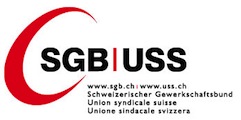Publications des institutions partenaires
Prüfungsqualität und ihre Determinanten : eine empirische Untersuchung für die Schweiz
Institution partenaire
Deutsch / 01/01/2014
Prüfungsqualität und ihre Determinanten : eine empirische Untersuchung für die Schweiz
Institution partenaire
Deutsch / 01/01/2014
Financial innovation, communication and the theory of the firm
When markets are incomplete, the competitive equilibria considered so far are not constrained Pareto–efficient, production efficiency breaks down and shareholders no longer agree on the objective function of the firm. We first show by way of an example that these inefficiencies can result from the double role of firms in incomplete markets: providing high market value and providing...
Institution partenaire
English / 01/01/2014
The Changing Role of Business in Global Society: Implications for Governance, Democracy and the Theory of the Firm
Institution partenaire
English / 01/01/2014
Jürgen Habermas and Organization Studies – Contributions and Future Prospects
Institution partenaire
English / 01/01/2014
A comparison of different pay-per-bid auction formats
Pay-per-bid auctions are a popular new type of Internet auction that is unique because a fee is charged for each bid that is placed. This paper uses a theoretical model and three large empirical data sets with 44,614 ascending and 1,460 descending pay-per-bid auctions to compare the economic effects of different pay-per-bid auction formats, such as different price increments and...
Institution partenaire
English / 01/01/2014
Sampling, discounts or pay-what-you-want: two field experiments
Pay what you want (PWYW) is a new participative pricing mechanism in which consumers have maximum control over the price they pay. Previous research has suggested that participative pricing increases consumers' intent to purchase. However, sellers using PWYW face the risk that consumers will exploit their control and pay nothing at all or a price below the seller's costs....
Institution partenaire
English / 01/01/2014
The impact of buy-now features in pay-per-bid auctions
Pay-per-bid auctions require all bidders to pay for every bid. However, paying bidding fees without receiving the auction item in return often causes high dissatisfaction among losers, resulting in heated discussions and high churn rates. To reduce these negative reactions, pay-per-bid auctioneers created the Buy-Now feature, which allows losers to put all or part of the bidding fees...
Institution partenaire
English / 01/01/2014
Dynamic Pricing Support Systems for DIY Retailers - A Case Study from Austria
Merchandise managers have long dreamt of automated dynamic systems to help them make well-informed pricing decisions. However, such systems have proved as elusive as the Holy Grail - until now, that is. The story of an Austrian DIY retailer shows often undetected opportunities to use valuable information, hidden in retailers' data warehouses, on consumer reactions to previous...
Institution partenaire
English / 01/01/2014
Corporate lobbying and firm performance
Corporate lobbying activities are designed to influence legislators, regulators, and courts, presumably to encourage favorable policies and/or outcomes. In dollar terms, corporate lobbying expenditures are typically one or even two orders of magnitude larger than spending by Political Action Committees (PAC), and unlike PAC donations, lobbying amounts are direct corporate...
Institution partenaire
English / 01/01/2014
Social brains on drugs: tools for neuromodulation in social neuroscience
Neuromodulators such as serotonin, oxytocin, and testosterone play an important role in social behavior. Studies examining the effects of these neuromodulators and others on social cognition and behavior, and their neural underpinnings, are becoming increasingly common. Here, we provide an overview of methodological considerations for those wishing to evaluate or conduct empirical...
Institution partenaire
English / 01/01/2014
Nationen im Innovationswettlauf: Ökonomie und Politik der Innovation
Das Buch zeigt die Zusammenhänge zwischen Innovationen bzw. Innovationsprozessen mit der Entwicklung moderner Volkswirtschaften. Untersucht werden die Faktoren und ihre Interaktionen, die für die Leistung der Innovationssysteme von Regionen oder ganzer Nationen verantwortlich sind. Dabei geht es um die Beiträge des Bildungssystems, der öffentlichen und privaten Forschungs- und...
Institution partenaire
Deutsch / 01/01/2014
The neural basis of strategic choice
In this chapter, we present a set of concepts and tools for defining and examining strategic choice that are drawn from behavioral economics and discuss how they can be applied to and tested with neuroscience techniques. The standard language for studying strategic choice in economics is game theory. Game theory provides concrete mathematical formulas for linking strategic actions to...
Institution partenaire
English / 01/01/2014
Untangling perceptual memory: hysteresis and adaptation map into separate cortical networks
Perception is an active inferential process in which prior knowledge is combined with sensory input, the result of which determines the contents of awareness. Accordingly, previous experience is known to help the brain "decide" what to perceive. However, a critical aspect that has not been addressed is that previous experience can exert 2 opposing effects on perception: An...
Institution partenaire
English / 01/01/2014
Pagine
Le portail de l'information économique suisse
© 2016 Infonet Economy












